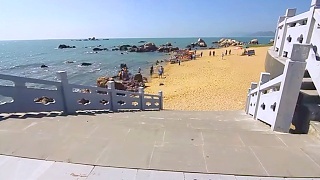
|
With Walk China ...
Introduction
ShuangLang ancient town is a charming and picturesque village located on the eastern shore of ErHai Lake, DaLi, Yunnan province. Known for its tranquil lakeside scenery, traditional Bai architecture, and vibrant arts scene, Shuanglang is an ideal destination for those looking to experience the natural beauty and cultural richness of the region.
Getting There
By Air: The nearest airport is Dali Airport (DLU). From the airport, you can take a bus or hire a taxi to Shuanglang, which is about 50 km away.
By Train: The nearest major train station is in Dali. From Dali, you can take a bus or taxi to Shuanglang, which takes about an hour.
By Bus: Direct buses run from Dali Ancient Town to Shuanglang, providing a convenient and scenic route along Erhai Lake.
Best Time to Visit
The best time to visit Shuanglang is during the spring (March to May) and autumn (September to November) when the weather is mild and pleasant. Summers can be hot and rainy, while winters are cooler but still enjoyable for sightseeing.
Main Attractions
Erhai Lake: Shuanglang is situated on the shores of Erhai Lake, offering stunning views and opportunities for boating, cycling, and lakeside walks.
Moon Palace: A popular landmark in Shuanglang, the Moon Palace is known for its beautiful architecture and panoramic views of Erhai Lake.
Yuji Island: Accessible by boat, this small island is home to a variety of art galleries, cafes, and boutique shops, making it a great spot for a day trip.
Jinsuo Island: Another nearby island worth visiting, known for its traditional Bai village and tranquil atmosphere.
Benzhu Temple: A historic temple dedicated to local deities, providing insight into the spiritual and cultural heritage of the Bai people.
Cultural Highlights
Bai Ethnic Culture: Shuanglang is predominantly inhabited by the Bai ethnic group. Explore their unique customs, traditional Bai houses, and vibrant festivals.
Art and Craft: Shuanglang is known for its thriving arts scene. Visit local art galleries, workshops, and boutiques to see the work of local artists and artisans.
Local Festivals: Experience traditional Bai festivals such as the Third Month Fair and the Torch Festival, which feature music, dance, and local cuisine.
Accommodation
Shuanglang offers a range of accommodation options, from luxury boutique hotels to budget-friendly guesthouses. Some recommended places to stay include:
Sky Valley Heritage Boutique Hotel: A luxury hotel offering stunning views of Erhai Lake and elegant, traditionally designed rooms.
Sea & Moon Inn: A mid-range hotel with comfortable rooms and a beautiful lakeside location.
Shuanglang Daxie Homestay: A budget-friendly guesthouse providing a cozy and authentic experience of local hospitality.
Dining
Local Cuisine: Shuanglang is known for its fresh lake fish, traditional Bai dishes, and local specialties. Don't miss trying Erhai Lake fish hotpot, Bai-style grilled fish, and various wild mushroom dishes.
Restaurants: Recommended eateries include Spring of Small Town, Qingyu Restaurant, and Yixiangxuan Restaurant.
Conclusion
Shuanglang Ancient Town offers a serene and culturally enriching travel experience. Whether you're exploring the scenic shores of Erhai Lake, delving into the rich Bai culture, or simply relaxing in a lakeside café, Shuanglang promises a memorable and peaceful retreat.
|






 A trip to China 中国, 2012
A trip to China 中国, 2012











